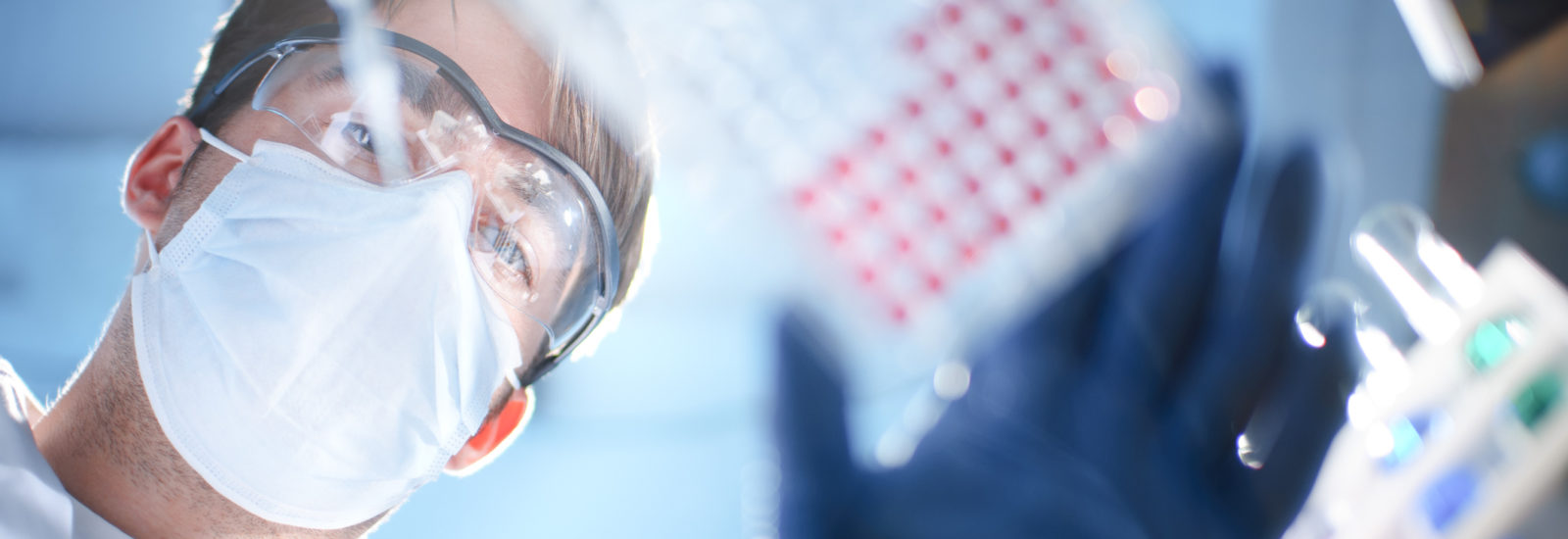

New Liver Tissue Microarrays Available – What Would Benefit Your Research?
- Disease-Specific Resources
- April 2, 2019
- Madison Esely-Kohlman, Dr. Maciej Czerwinski
As technology evolves to better meet needs in exploration of drug metabolism pathways and disease mechanisms, familiarization with appropriate and innovative tools for research is key. XenoTech is expanding its selection of tissue microarrays (TMAs) to provide such tools to accelerate cutting-edge research. TMAs are used for direct comparison between tissue samples from many different donors within one histologic slide, and arrays can be created for many applications to address customers’ specific areas of research.
The XenoTech Research BioBank provides tissue for microarray assembly representing various ages and ethnicities to meet needs of researchers all over the world. In addition to standard demographics, donor information makes it easy to tailor assays to specific applications of research—for example, you can select individual donors for history of diabetes, alcohol use, as well as stages of liver disease.
Not only can you select certain criteria to request a new array, but we have already created tissue arrays to fit highly sought-after needs. Researchers interested in fatty liver disease, NASH, and alcohol-related hepatic dysfunction are able to put together arrays to better represent relevant populations. TMAs are updated to reflect needs in growing areas of research, and most recently our collection has been expanded to include diabetic, fibrotic, and a pediatric array.
Pediatric liver disease affects hundreds of thousands of families around the world. In the United States, nonalcoholic fatty liver disease (NAFLD) is the most common form of liver disease in children. The rate of occurrence has more than doubled in the last 20 years, affecting nearly 11% of adolescents. NAFLD can lead to cirrhosis, liver failure, and is a risk factor for liver cancer[1]. The need to explore therapeutic avenues towards NAFLD is on the rise, necessitating research specific to pediatric liver function and drug response.
Tissue microarrays are used in higher-throughput mode, alleviating pains associated with conventional lot-to-lot comparison which can have inconsistencies skewing results and are less efficient. TMAs can be used for a wide variety of studies, including biomarker analysis and protein and gene profiling. Additionally, the uses of tissue arrays cater to values in efficiency and quality. TMAs boast “substantial benefits over standard techniques and represents a significant advancement in molecular pathology. For example, TMA technology reduces laboratory work, offers a high level of experimental uniformity and provides a judicious use of precious tissue.”[2]
At XenoTech, we have dedicated teams of experts to develop and validate all of our products for outstanding quality and ease of use. The newly available pediatric hepatic tissue array is comprised of 25 samples representing a range of disease status with an additional 5 controls. Tissue sourced from our Research Biobank is mounted unstained with no overlay in 3mm diameter cores which are 4µm thick. Staining options are available upon request for convenience. All arrays come with information about donors’ gender, age, ethnicity, and BMI and can be customized for more specific comparison.
Kansas University Medical Center and XenoTech scientists have already used these novel products in several studies, probing drug metabolism and hyaluronan (HA) distribution.
In March, Dr. Brian Ogilvie gave a presentation at the 2019 Society of Toxicology (SOT) Meeting in Baltimore, MD, detailing activity of CYP1A2, an enzyme which is a major player in biotransformation of nearly 10% of commercially used drugs, in pediatric tissue. The study compared localization and abundance of the enzyme across normal and diseased livers and found a correlation between enzyme activity and disease status, informing further studies involving CYP1A2 activity in the context of advancing pediatric liver disease therapies.
Additionally, a poster investigating patterns of hepatic hyaluronan (HA) deposition was presented at the 2019 SOT Meeting by Dr. Maciej Czerwinski. Hyaluronic acid is a component of extracellular matrix associated with liver disease in adults but has not been studied in children. The study aimed to fill this knowledge gap, and detected HA deposition in 24 of 25 pediatric samples presenting various stages of liver disease. The study concluded that tissue samples with NAFLD displayed HA in more diffuse lobular pattern and expanded portal. Of the importance of pediatric TMAs in the study design, Dr. Czerwinski said, “The pediatric liver tissue microarray allowed demonstration of normal and disease-associated HA localization and identification of distinct staining patterns in different patient cohorts.”
While pediatric TMAs will most certainly meet needs in exploration and treatment of pediatric liver disease, XenoTech offers other microarrays as well, and is in the process of developing more. What demographic or disease status would you like to see selected for an array?
Learn more about:
[1] Welsh JA, Karpen S, Vos MB. Increasing prevalence of nonalcoholic fatty liver disease among United States adolescents, 1988-1994 to 2007-2010. J Pediatr. 2012;162(3):496-500.e1.
[2] Quagliata L, Schlageter M, Quintavalle C, Tornillo L, Terracciano LM. Identification of New Players in Hepatocarcinogenesis: Limits and Opportunities of Using Tissue Microarray (TMA). Microarrays (Basel). 2014;3(2):91-102. Published 2014 Apr 15. doi:10.3390/microarrays3020091
About the Authors
Related Posts
Disease-State Test Systems
What is ADME and how does it fit into drug development?
Subscribe to our Newsletter
Stay up to date with our news, events and research

Do you have a question or a request for upcoming blog content?
We love to get your feedback
